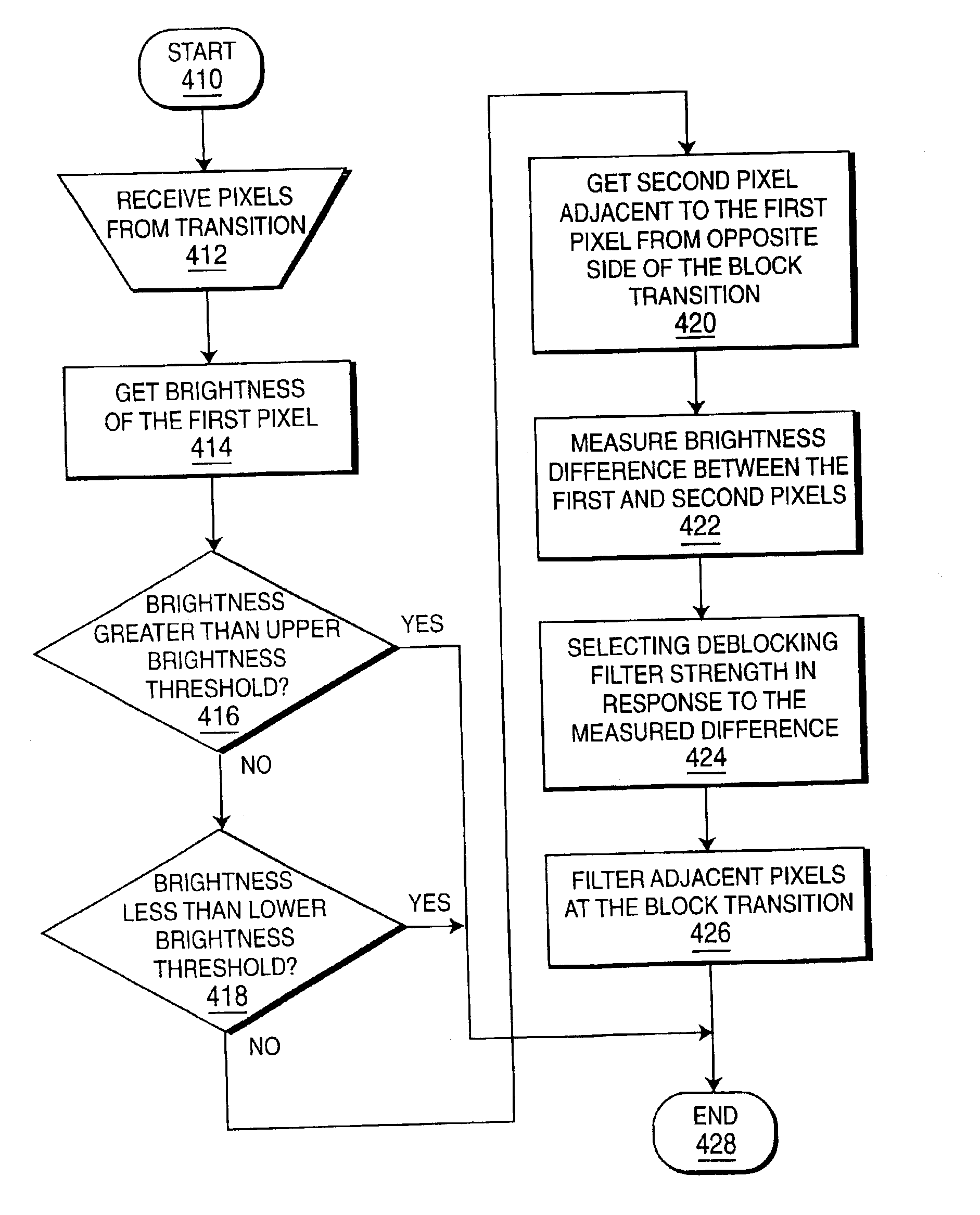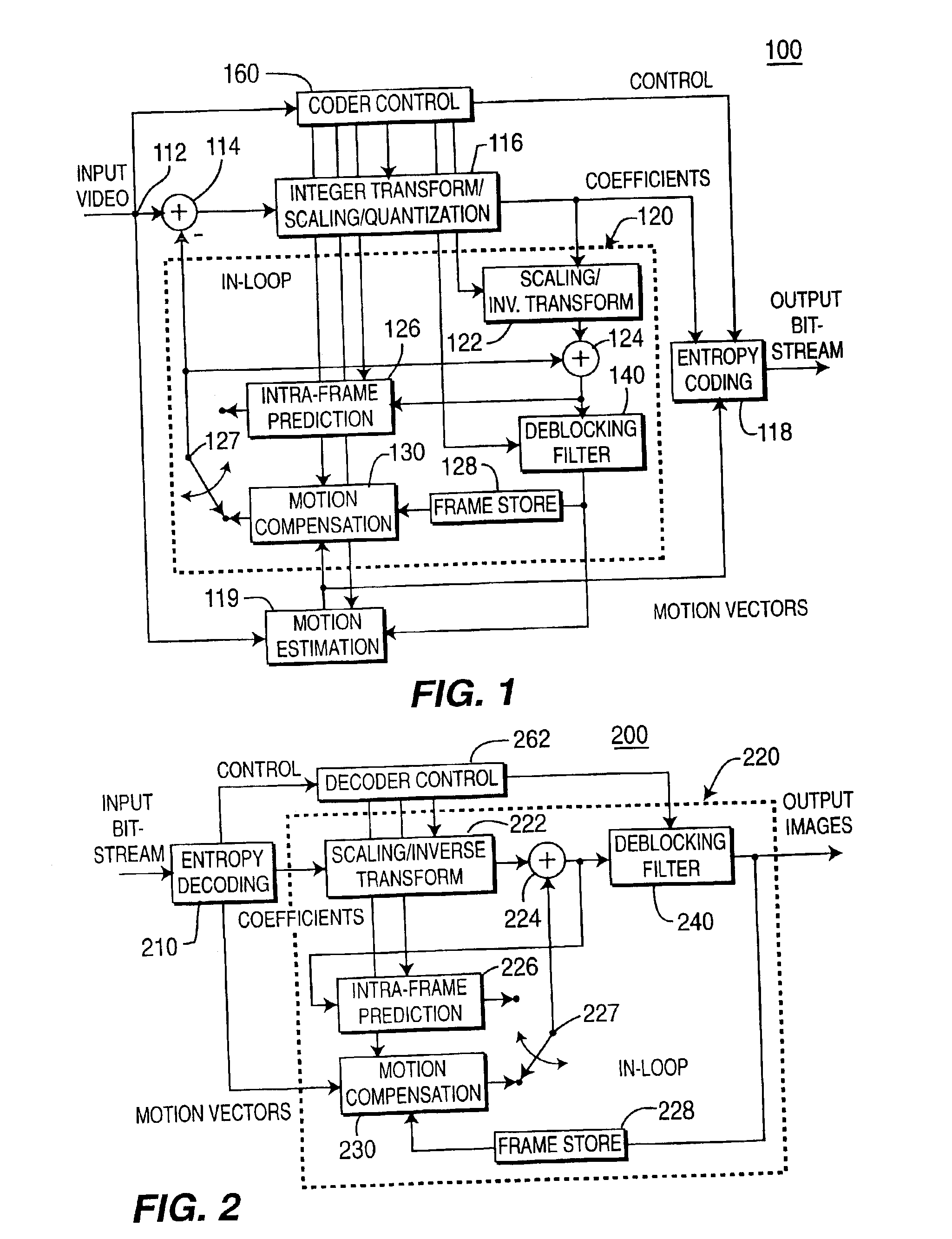Deblocking filter conditioned on pixel brightness
a filter and brightness technology, applied in the field of video decoding and decoding filters, can solve the problems of requiring a significant amount of computational complexity at the video decoding and/or encoder
- Summary
- Abstract
- Description
- Claims
- Application Information
AI Technical Summary
Benefits of technology
Problems solved by technology
Method used
Image
Examples
Embodiment Construction
[0014]Implementation of a deblocking filter generally requires a significant amount of computational complexity at the video decoder and / or encoder. Determination of whether or not to filter a particular edge transition and the particular filter used to perform the filtering operation each have a large impact on both the computation complexity and the perceived visual quality. Implementation of a deblocking filter in a block-based digital video compression system can be simplified by deciding whether or not to apply a low-pass filter at a block transition based on the brightness level of the pixels at the transition. Thus, the computational complexity can be reduced by omitting application of a deblocking filter to transitions were it would not improve the perceived visual quality. The present invention reduces the computational complexity of a deblocking filter without significantly impacting the perceived visual quality by deciding whether or not to apply a low-pass or deblocking ...
PUM
 Login to View More
Login to View More Abstract
Description
Claims
Application Information
 Login to View More
Login to View More - R&D
- Intellectual Property
- Life Sciences
- Materials
- Tech Scout
- Unparalleled Data Quality
- Higher Quality Content
- 60% Fewer Hallucinations
Browse by: Latest US Patents, China's latest patents, Technical Efficacy Thesaurus, Application Domain, Technology Topic, Popular Technical Reports.
© 2025 PatSnap. All rights reserved.Legal|Privacy policy|Modern Slavery Act Transparency Statement|Sitemap|About US| Contact US: help@patsnap.com



